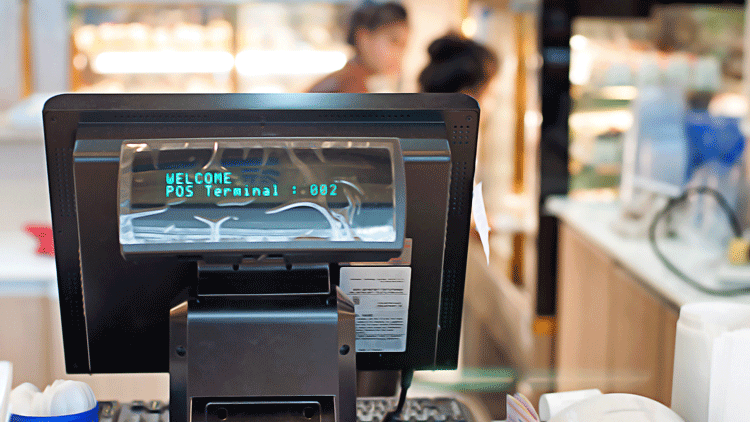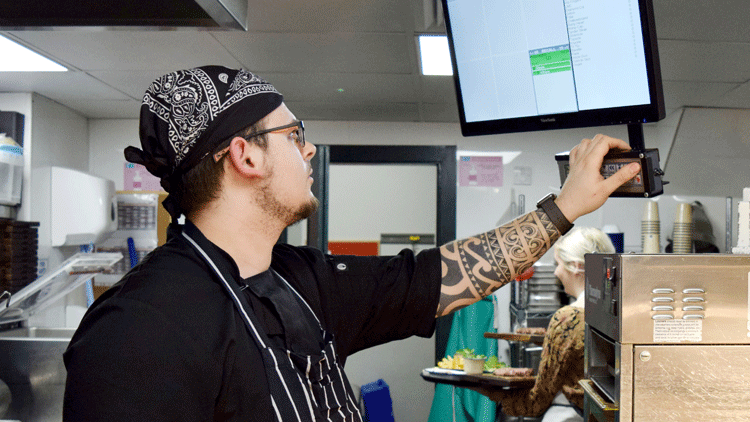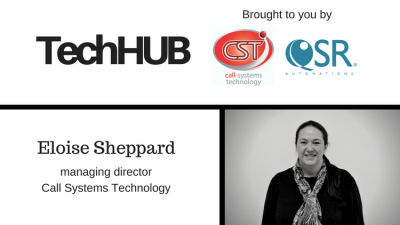EPoS Expert: Driving business this Christmas

It is a challenging time for the eating out sector with the onslaught of Brexit, declining consumer confidence and fears of an economic slowdown.
The festive season normally brings a ring to the tills with Christmas parties and family reunions fuelling trade for the restaurant sector.
The increasingly tough trading environment means it has never been more important for restaurants to market and promote themselves and obtain bookings and increase consumer spend this Christmas.
Jerome Laredo, the VP EMEA of Lightspeed, the point-of-sale system, recognises that the industry is facing a challenging time, with strong competition and venues finding it increasingly hard to differentiate themselves.
He says one of the key areas that has become more important is the ability to offer better service while being able to recognise repeat customers and know what they want.
“That is where technology can help,” he says. “If you are able to have a loyalty programme or just to capture information about your customer you can be proactive. Offer for them to book a table in advance or design a special menu for them.”
He says that the technology available with such a system means that it can capture customer information including what table they were sitting at during their last five meals, enabling the restaurant to target the customer with specific personalised suggestions.
Help is at hand: Tech can help drive business over Christmas
“Everyone receives tonnes of emails saying ‘book your party here’ and ‘book your party there’. There is absolutely no personalisation in this,” he says.
“I would rather receive a personalised email where you actually feel that they know you. It says ‘Why don’t you come with your friends and we will have a special on some Bordeaux?’”
To drive loyalty, restaurants must first understand their customers, and this is where new technology can help. US company Paytronix, which claims to be the leader in restaurant reward and guest engagement programmes in North America, recently entered the UK restaurant sector.
Nando’s is one of its first UK customers, with the chicken restaurant chain running the Paytronix platform within its 384 UK and Ireland restaurants.
Developed specifically to give restaurant and retail operators a greater understanding of their customer base, the Paytronix platform also helps motivate increased traffic and spending and further differentiate brands in highly competitive markets, says the company.
In the case of Nando’s, millions of its Nando’s Card reward programme accounts were migrated to the Paytronix platform.
Guests can pick up a Nando’s Card at any restaurant and start earning rewards called ‘chillies’. Diners add a new chilli to their ‘chilli wheel’ for every bill of £7 or more and the further they move around the wheel, the better rewards they can receive.
To claim a reward, guests need to register their card online or via the Nando’s mobile app.
Loyal customers spend more, visit more, and talk about your brand more than your average guests, according to Paytronix, which says its systems enable its restaurant partners to create strong loyalty schemes.
“Nando’s was able to take advantage of our proven technology and process to seamlessly migrate millions of customer accounts on to the Paytronix Rewards platform. Now Nando’s has a reliable service that is always available to its guests, anytime, anywhere,” says Andrew Robbins, president at Paytronix Systems.
Paytronix also says that by using its software, restaurants can strengthen customer relationships and create rich customer profiles.
Increasing spend
Getting the customer into the venue is the first challenge but once they are on-site the focus needs to be on increasing spend.
Laredo says that technology can also help restaurants to drive this extra spend. Systems such as remote iPad ordering make processing orders much quicker for waiters allowing them to spend more time with customers and ultimately upsell additional products.
Self-ordering systems, many of which show images of the food, are also proving very popular in certain types of venues such as sushi bars, tapas and those focused on sharing plates, he says.
“If you imagine a Christmas party with a table of 15 to 20 people who are having fun. Tell them you have a tab open, here is your iPad, place your orders and get your cocktails. People will upsell themselves.”
“Instead of trying to wave over the waiter for another bottle of wine or round of beers the customer is only three clicks away. Then the waiter is there with their drinks. This is guaranteed additional revenue.”
Connected kitchens
Increasing the speed of service can also increase revenue. Traditionally overlooked by tech companies, back-of-house technology is now receiving much more interest as restaurants look to speed up kitchen and back-office operations.
Flat Iron is one of a steadily increasing number of restaurant businesses to utilise advanced automation solutions that bring front and back of house into step with each other. The Charlie Carroll-led group uses QSR Automations ConnectSmart Kitchen (CSK) across back of house and DineTime front of house.
“We were opening a bigger site with two floors and we realised that we needed to rethink the manual printed tickets that we had in the other sites that didn’t allow for front and back of house to communicate, so we investigated and felt that it was the right technology for the Henrietta Street site,” says operations manager Franziska Gach.
Connected: Kitchen management systems can improve front and back of house comms
The group was keen to increase speed of service and communication. “In our other sites, it’s very easy for the host to see all of the tables, meaning they can very easily predict wait times and how long a table will stay,” she continues. “In Henrietta Street, because of the layout, it’s quite difficult and we would have had to have two people constantly communicating with the host. In terms of back of house, operations run smoother."
“We are less likely to lose orders because the physical tickets sometimes got lost. It’s very easy to handle and operate the screens and it makes us run smoother and faster. Speed was definitely a priority, we have quite a lot of people visiting Henrietta Street and we do try to serve them within 10 to 12 minutes.”
Ashley Sheppard, group commercial director at CST, the company that supplies ConnectSmart Kitchen and DineTime, says that one of the biggest issues with restaurant operations today is that so much of the communication is done by mouth or paper, leaving room for unavoidable human error.
“Back-of-house technology such as QSR Automations ConnectSmart Kitchen (CSK), has evolved to such an extent that it allows the kitchen to seamlessly integrate with front of house even more closely and efficiently than ever before,” he says. “Not only does this mean happier customers, it also ensures a confident workforce who can concentrate on serving customers, rather than checking tickets, chasing orders or organising other team members.”
Getting dietaries right
Dietary requirements can be a big headache over the Christmas period but help is at hand. Technology is changing the way dietary requirements are dealt with in restaurants. Kafoodle is billed as an end-to-end food management system that helps improves restaurants’ profitability, digitises their processes and provides “seamless” communication between kitchen and diners.
Its cloud-based software allows teams to share information about menus and update it in real time. Allergens are automatically assigned to ingredients and recipes, allowing restaurants to easily tell diners what each dish contains.
Kafoodle can calculate and display the nutritional information of each dish using a simple calculator. Staff can then choose which information they highlight and share with diners, providing a simple means of identifying healthier options.
“I know how resistant staff can be to working with new technology yet at the same time, technology can make things massively easier for kitchen and front-of-house staff,” says Kafoodle co-founder Tarryn Gorre. “When I developed Kafoodle, I worked from the industry out – consulting widely with the people who would actually be using the product – until I was happy that we had developed technology that was truly simple to use and, above all, really useful.”
While the restaurant sector is facing a challenging time getting the right marketing strategy in place and focusing on increasing spend are essential for driving business over the Christmas period. With just a week or so to go until the big day there is still an opportunity for restaurants to increase their number of bookings and income.
































